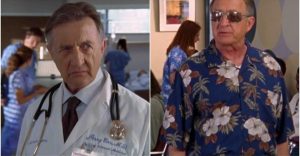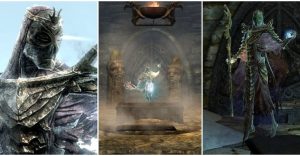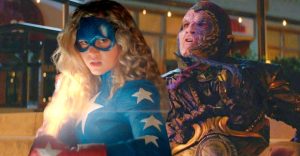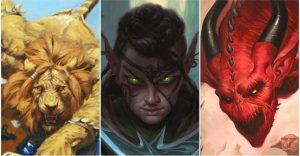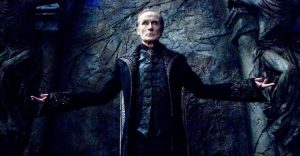Harry Potter: 10 Unanswered Questions We Still Have About Dark Magic
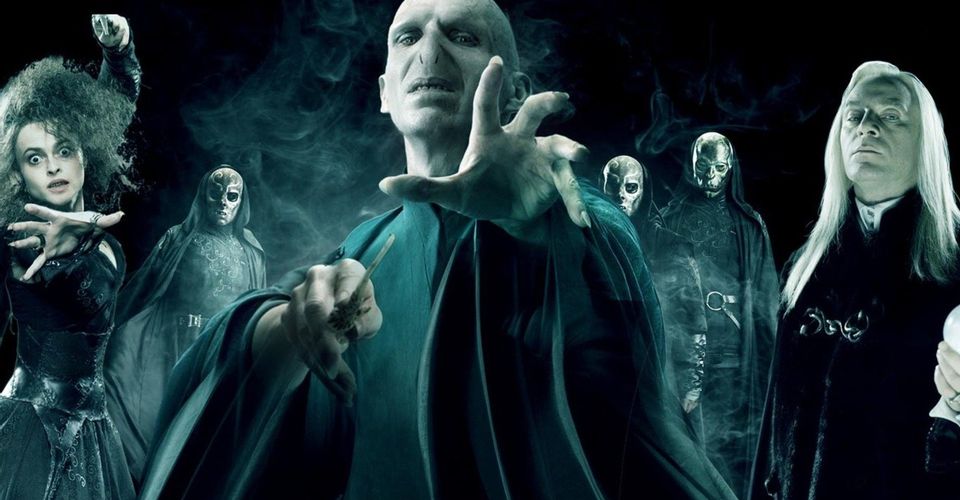
The Dark Arts remain one of the most intriguing areas in the Potter universe. There is a lot that can be written and speculated on when it comes to this rather fascinating, extremely dangerous branch of magic that, as far as the Potterverse is concerned, culminated in one of the darkest and most evil wizards of all time, Voldemort.
However, the Dark Arts are not just about Voldemort or his gang of Death Eaters. There is so much more to it that we don’t really know about and a lot of it that remains a mystery, true to its nature.
10 How Much Of The Dark Arts Are Banned?

Okay, so the Dark Arts are like the big, bad and ugly of all magic, but how much of it is actually illegal? For instance, we know that there is a shop in Knockturn Alley called Borgin and Burkes that deals in all sorts of creepy, ancient artifacts, a lot of which easily falls within the dark realm.
If all forms of the Darks Arts are illegal, why doesn’t the Ministry of Magic simply shut down such shops? Further, we know that there are various types of dark magic, from the not so severe to the unforgivable and that certain institutes like Durmstrang actually take more interest in the Dark Arts. What we don’t know is how much of the less complex dark magic can actually be practiced, and how much of it straddles the line between the legal and the illegal.
9 Where Do Dementors Come From And Where Do They Go?

Rowling introduced us to the terrifying dementors in the third book of the Potter series, Harry Potter and the Prisoner of Azkaban. Dementors are described as one of the foulest creatures to inhabit the world.
An interesting thing about dementors is that we don’t really know how and where they originated. Is there only a limited army of dementors or are there more where they come from? Is it powerful magic that creates these dark entities or do they breed naturally in some dark, depressing corner of the world?
8 What’s The Damage From Certain Dark Spells?

Of course, there are curses that can cause irreparable damage to the victim, such as death, for instance. But what about those spells that are not necessarily forbidden but which are still extremely dangerous nonetheless? When Harry uses the deadly spell Sectumsempra against Draco Malfoy in The Half-Blood Prince, the latter is severely wounded, although Snape arrives on the scene immediately and manages to heal him.
However, in Harry Potter and the Deathly Hallows, George Weasley loses an ear from the same spell that becomes a permanent injury. Why is it that two people hit by the same spell have different outcomes? Or was it because Snape had invented the curse that he knew how to reverse it, thus healing Malfoy who might have otherwise died?
7 What’s The Deal With The Blood Curse?

The blood curse appears rarely in the Potterverse, but it is there. Fans will know that Astoria Malfoy, who was married to Draco, in Harry Potter and the Cursed Child, was afflicted with a blood curse. The curse had originally been meant for an ancestor but seemed to resurface in her and she finally died of frail health as a result of it.
Another example of the blood curse is the snake Nagini who, quite intriguingly, turns out to be a young woman, in the popular Potter spin-off Fantastic Beasts and How To Find Them 2. Nagini has a Maledictus curse upon her which is a blood curse passed on from generation to generation. Now, does the blood curse always reappear in later generations? Is that why it is called a blood curse as it affects the bloodline?
6 What Kind Of Twisted Magic Caused Nagini to Come Out Of A Dead Woman?

In The Deathly Hallows, Harry encountered Nagini who appeared to have inhabited the body of a dead woman, Bathilda Bagshot. While this was one of the darkest episodes in the book that made Harry realize the true extent of Voldemort’s powers and what he was up against, whoa–what really happened there?
Did Nagini take the shape of Bagshot who was already dead, in which case is Nagini also a shapeshifter? Does the Maledictus curse allow the victim to take different forms at will? And if the snake was simply inside the body of the dead woman, does that mean that Bagshot was, in effect a kind of Inferius at the time, animated by dark magic with the snake inside her?
5 What Happens To The Inferi?

Speaking of the Inferi, the undead that attacked Harry and Dumbledore in the sixth book, how much do we really know about them? We know that Voldemort had bewitched corpses at his whim, but where did they come from and what does fate have in store for these dead people?
Are the Inferi people that the Dark Lord had perhaps kidnapped and murdered in the course of time? More importantly, what happens to the Inferi once the source of the dark magic is gone? Do they go back to being dead, lying in wait until the next dark wizard shows up?
4 Do We Know Enough About Horcruxes?

The Horcrux involves the darkest magic yet, created by a person whose soul has been ripped by the ultimate act of evil, murder. But is it possible that Voldemort was the only wizard in the history of the Dark Arts that created Horcruxes? After all, Riddle did read about them in a book and Slughorn knew enough about them to inadvertently give him the information he was seeking.
Moreover, there had been dark wizards in the past, for instance, Gellert Grindelwald, who had committed murders. What happened to their soul? Of course, one could argue that Voldemort’s mind was the most warped of them all, enough to seal away pieces of his soul to attain immortality. However, the fact remains that the Horcrux must have had some history before Voldemort put his mind to it.
3 Was Credence The Only Known Obscurial?

Credence Barebone, in Fantastic Beasts, is shown to be an Obscurial, whose magical abilities had been suppressed as a result of trauma and is manifested as a dark, destructive, parasitic energy.
Is Credence the only known Obscurus, or were there others? It is said that Obscurials were more common in past centuries when wizards and witches were persecuted and had to suppress their powers, and that very few lived past the age of ten. One wonders why Harry himself, who suffered verbally and emotionally in the hands of the Dursleys, did not become an Obscurial then.
2 Did Dumbledore Dabble In The Dark Arts?

Albus Dumbledore’s relationship with the notorious Grindelwald is one of the many enigmas in the Potterverse. We know that Dumbledore befriended the dark wizard when they were both young and that they began tracking down the Deathly Hallows.
However, knowing how Grindelwald turned out, it would not be farfetched to think that Dumbledore himself had been drawn by the Dark Arts at one time. Let us hope that the upcoming films in the Fantastic Beasts series shed some light on this.
1 What Exactly Counts As Dark Magic?

To sum it up, we can ask this very basic question; there is clearly a vast variety of spells, a lot of them with severe consequences and yet not all of them seem to be considered dark. For instance, there are charms like the Severing Charm, which when in the wrong hands, can cause major injuries or even death. Similarly, Legilimency is mind-reading, something that can easily be used by a dark wizard for the wrong reasons.
It seems as if certain spells that do not count as dark can still be used with evil intentions. As in life, so in the Potterverse, magic can be both good and bad.
About The Author










